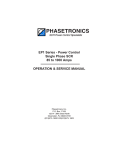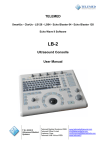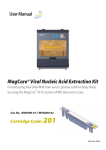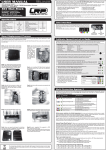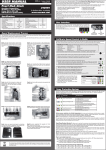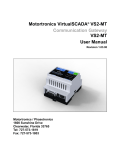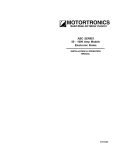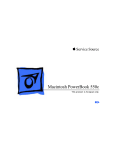Download PHASETRONICS
Transcript
PHASETRONICS SCR Power Control Specialists EP1 Series Power Control Single Phase SCR 10 - 50 Amps OPERATION & SERVICE MANUAL Phasetronics, Inc. P.O. Box 5988 1600 Sunshine Drive Clearwater, FL 33765 (727)573-1900 FAX(727)573-1803 EP1 Series SCR Power Control Description The EP1 Series of Phase Angle SCR Power Controls assures smooth proportional output power from 0 to 100%. This high quality SCR control is offered in single or a three phase version with a variety of options. These options include current limit, soft start current trip, voltage regulation and I2t fusing. The unit is ideally suited for all resistive and inductive or variable loads. The soft start feature assures a slow rising output voltage to prevent an inrush on inductive or variable resistance loads. The control input is adjustable to match all standard temperature and process controllers. The control signal sensitivity is adjustable by gain and offset potentiometers. The unit can be controlled from an external manual potentiometer. MOVs (standard) protect the SCRs from transient voltages. False firing (dv/dt) protection is standard. Receiving Upon receipt of this product you should immediately do the following: √ Inspect the unit for possible shipping damage. If damaged, notify the freight carrier and file a claim within 15 days of receipt. √ Verify the model number on the unit matches you purchase order. √ Verify that the unit is the correct current and voltage for your application. Warning! Do Not Service Equipment with voltage applied! Unit can be a source of fatal electrical shocks. To avoid shock hazard, disconnect main power before working on unit. -1- EP1 Series SCR Power Control Specifications Inputs Milliamp Input 4-20 mA Input Impedance - 250 ohms Analog Input 0-10 Vdc Signal / 0-5 Vdc Signal - 100k ohms input impedance Manual Control 10k ohm, 2 watt potentiometer, linear taper Output Current Rating 10 to 1000 Amps Output Stage Back to Back configuration AC Supply Voltage 120/208/240/308/415/480/575 Vac(+10% to -15%, 50/60 Hz) Type of Loads Resistive / Inductive / Lamp Soft Start Hard Firing Gate Pulse Input Adjustments Gain 4-20mA, 0-5 Vdc, 0-10 Volts Offset 50% of gain maximum Regulation (Option R) Protective Networks Factory set for initial half-second of operation of power on. Field adjustable via potentiometer from 0.2 seconds to 30 seconds A combination of a high-potential gate pulse and a rapid rise time is used to prevent SCR damage due t di/dt stress Optional feature to provide load avrage voltage regulation of plus or minus 2% for +10% to -10% of gain maximum Optional Fusing Transient Voltage Suppressor SCR Peak Inverse Voltage (PIV Rating) I2t fuse protects against short-circuit overloads (Option F) RC Snubber RC snubber networks prevent false firing due to dv/dt characteristics Ambient Temperature Integral MOV (Metal Oxide Varistor) protects against high potential transient voltage 2.5 times line rating (minimum) Operating range is from 0 C thru 40 C (30 F thru 122 F) Protective Networks Transient Voltage Suppressor (standard) - Integral MOV (Metal Oxide Varistor) protects against high potential voltage spikes. RC Snubber (Standard) - RC Snubber networks are used to prevent false firing due to dv/dt characteristics. SCR Peak Inverse Voltage (PIV Rating) Line Voltage: 120 - 480 575 Continuous SCR Rating 1200 Volts 1500 Volts Ambient Temperature Ambient temperature operating range is 0 to 40 degrees C (32 to 122 F). Output rating decreases by 10% for each 5 degree C rise (9° F) in ambient temperature over 40 degrees C (122° F) to a max of 60 degrees C (140° F). Transportation and storage range is -30 to 65 degrees C (-30 to 149° F). -2- EP1 Series SCR Power Control Location Proper location of the EP1 Series is necessary to achieve specified performance and normal operation. The EP1 Series should always be installed in an area where the following conditions exist: • • • • • • Ambient operating temperature is 0 to 40 degrees C (32 to 104° F) Protected from rain and moisture Humidity range from 5% to 95% non-condensing Free from metallic particles, conductive dust and corrosive gas Free from excessive vibration (below 0.5G) Open panel units must be mounted in the appropriate type of enclosure. Enclosure size and type must be suitable to dissipate heat generated by the SCR power control. (NEMA 1 style enclosures can be vented to reduce size) Formulas for sizing Non-vented painted metal enclosures Units maximum current (FLA) x 1.5 = watts then watts / 10 = sq.ft. of exposed area Non-vented stainless steel enclosures ( FLA10x 1.5 ) Warning! x 1.5 = sq.ft. of exposed area Do not service equipment with voltage applied! Unit can be source of fatal electrical shocks! To avoid shock hazard, remove all sources of power before working on controller. Warning labels must be attached to terminals, enclosure and control panel to meet local codes. Mounting and Cleaning If mounting the EP1 Series unit in an enclosure requires drilling or punching holes in the enclosure, cover the electrical assembly to protect unit from metal filings that could short out electronics. After work is complete, thoroughly clean the area and reinspect the EP1 Series. Make sure there is sufficient clearance (six inches) all around the EP1 Series unit for cooling. The unit must be installed with its heat sink ribs oriented vertically and running parallel to the mounting surface. Unit should be cleaned on a regular basis to insure proper cooling. Do not use any chemicals to clean the unit, use 80 to 100 psi clean dry compressed air only. A three inch high quality dry paint brush is helpful to loosen up the dust prior to using compressed air on the unit. -3- EP1 Series SCR Power Control Manual Control Connections If manual potentiometer is not used, proceed to Automatic Control Connections. Manual potentiometer does not have to be connected for unit to operate. Connect manual potentiometer to TB2-3(wiper), TB2-4(high) and TB2-6(low) per connection ( See Figure 1 for connections & Figure 2 for locations). Figure 1 - Manual Connections Automatic Control Connections Connect DC voltage or milliamp input signal to pins 1(positive) and 2(negative) on TB2. You must select the proper jumper for 4-20 mA*, 0-5 Vdc or 0-10 Vdc. (See location of jumpers and pins Figure 2) 0-10 Vdc connection jumper X4 installed mA connection * 4-20 jumper X2 installed (factory setting) 0-5 Vdc connection jumper X3 installed Figure 2 - TB2 Connections If manual and automatic control are both used, consider using an external auto/manual switch to stop the manual setting from overriding the automatic signal. -4- EP1 Series SCR Power Control Power Connections Make line 1 connection to L1 and Load connection to T1. (See Figure 3) If option card is not used connect L2 (using 18-22 gauge wire) to terminal 6 on TB1(EPCL1000). (See Figure 3) If option card is used, connect L2 to terminal 7 of TB2 on option card. (See Figure 4) L2 connection (if no option card is present) L1 (Hot) T1 (To Load) Figure 3 - Power Connection (no option card) Option Card (mounted on main logic board when options are ordered) L2 Connected to TB2-7 on option card Figure 4 - Power Connection (with option card) Soft Start (Standard) Soft start ramp adjustment is factory set (P3) for 0.5 seconds. The soft start ramp time can be increased to a maximum of 30 seconds by adjusting P3 in a clockwise(CW) direction. Note: Soft start is active only when initial power is applied and a command signal is present. It has no effect on control signal change. (See Option S on page 6 if soft start is required on restart of mA signal or when lockout is released.) -5- EP1 Series SCR Power Control Options The following options are available on the EP1 Series but must be specified when ordering. When options are ordered a separate option card is mounted on top of the main logic board. Soft Start (Option “S”) Provides soft start on a signal change or when lockout is released. This will help protect fuses. The unit is set up so that either of these two soft start modes can be disabled by removing X1 & X2 on option card (See figure 5 below or Option board page 8). The unit will ramp up on a signal change if this signal is set below a threshold level. The threshold is adjustable from 0 to 30 seconds of control signal range. Current Limit (Option “C”) Provides flexibility for changing loads, helps protect unit. Adjustable from 10-110% of unit rating. Current limit will override control input signal to limit the output current. Current transformer included. To disable remove X1 & X3 on option card. (See figure 5 below or Option board page 8) Current Trip (Option “T”) Used as a protective measure. This option will shut down unit when the current exceeds an adjusted preset level. Adjustable from 75-200% for instantaneous trip if current exceeds set level. Unit can be connected for manual reset. Current transformer included. To disable remove X4. (See figure 5 below or Option board page 8) Line Voltage Regulation (Option “R”) Provides more accurate linearity. Will maintain output within 2% with a +/10% line variation. Option Card (mounted on main logic board) Note: The number of potentiometers on the option card will vary depending on the options ordered. Figure 5 - Option setting locations -6- EP1 Series SCR Power Control Main Logic Board (EP1 Series - 10 - 50 Amp) L2 Connection (used when no option card is present) -7- EP1 Series SCR Power Control EP1 Series Option Board This board is mounted on main logicboard when options are ordered. L2 Connection -8- Warranty Policy Motortronics warrants its products to be free from defects in material and/or workmanship for a period of one year from date of installation, to a maximum of 18 months from the date of shipment as indicated by the unit’s date code. The Company reserves the right to repair or replace any malfunctioning units under warranty at their option. All warranty repairs must be performed by the Company factory, or on site by a factory authorized service firms or personnel approved by the Company. Solid state controls have different operation characteristics from those of electro-mechanical equipment. Because of these differences and the wide variety of applications for solid state controls, each application designer must verify that the solid state equipment is acceptable for his application. In no event will Motortronics be responsible or liable for indirect or consequential damages resulting from the use or application of this equipment. The diagrams and illustrations in this document are included solely for illustrative purposes. Because of the number of different applications, Motortronics can not be responsible or liable for actual use based on the examples or diagrams. -9-










